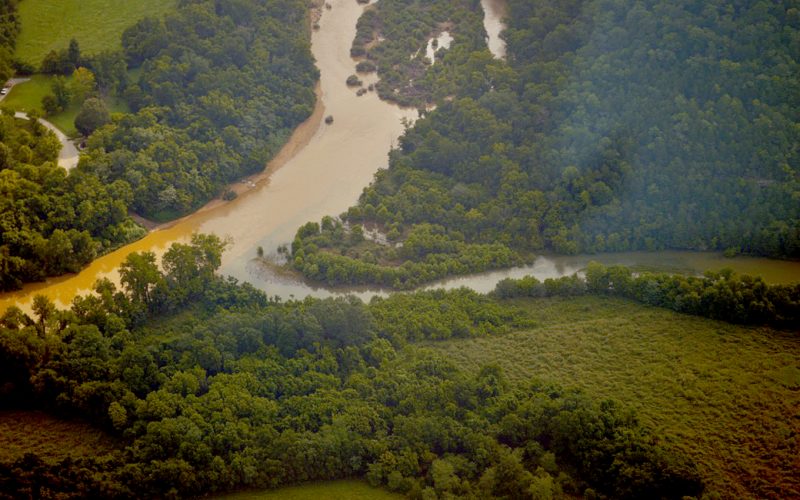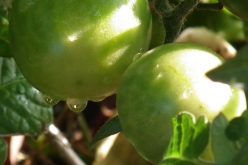So, what is up on the Buffalo River? Many people in Arkansas are now aware that a 6500 head confined animal feeding operation (CAFO) for swine was granted a permit to operate in Mount Judea.
The news sparked a lot of controversy.
In the past year, proponents of C&H Hog Farms Inc. have repeatedly cautioned that we should “wait for the science” before concluding that the Buffalo River might be negatively impacted. A moratorium was placed on permitting additional large and medium factory facilities in the watershed in the meantime.
Yet recently it was announced that the moratorium may be allowed to expire, potentially opening the watershed to more such industrial-scale operations.
There is a lot of scientific work being done on the Buffalo River to determine the facts surrounding this issue. Andrew Sharpley, who heads up the University of Arkansas study commissioned by Governor Beebe, has stated that his study cannot be meaningful without several years of follow-up. So asserting that no degradation of the river has been detected by the UA study is not entirely accurate. There is other scientific work going on that the public needs to be informed about, say Ozark River Stewards and the Buffalo River Watershed Alliance who are sponsoring an event to do just that. These organizations point to an extensive two-year study done by the Pew Institute, a non-partisan think tank, looked at myriad aspects of industrial animal production in five states and concluded by recommending a phase-out of this kind of intense animal feeding operation due to multiple negative impacts, not the least of which is the staggering amount of waste generated.
On Saturday, Oct. 18, a free program, What’s Up on the Buffalo? Rolling Out the Science, will offer the latest information on the monitoring and research activities in the Buffalo River Watershed, as well news on the legal challenges, recent legislation and pending decisions related to the issue.
Five speakers include U of A Professor Emeritus, John Brahana, a hydro-geologist and karst consultant. Brahana will reveal the latest results of his studies of groundwater transport in the Buffalo River Watershed. Chuck Bitting, a naturalist and karst geologist, will address how endangered species may be affected by a decrease in water quality. This free educational program will take place at St. Paul’s Parish Hall, 224 N. East Avenue, Fayetteville from 7-8:30 p.m. More information is available at www.ozarkriverstewards.com.
After substantial questions were raised about the permitting process, how closely the rules were actually followed, and about the perils of spraying hog waste on pastures in the Big Creek valley, six miles from the confluence with the Buffalo River near Carver, Cargill spokesmen have promised their company will not build more facilities in the area, but also state that they have no plans to stop sending animals to C&H Hog Farms Inc.
Company executives have admitted to stakeholders that the siting of this facility was a mistake, but they are hanging tough, although conceding that they are willing to require some retrofitting and additional safeguards to what they previously characterized as being ‘state-of-the-art technology.’ In response to Cargill’s concessions the Buffalo River Coalition, comprised of the Buffalo River Watershed Alliance, the Arkansas Canoe Club, the Ozark Society and the National Parks Conservation Association asserted on Sept. 8, 2014, that “While our coalition is pleased that Cargill has voluntarily committed to a moratorium on future hog facilities in the Buffalo River watershed, a Confined Animal Feeding Operation should not have been placed directly upstream from America’s first national river to begin with,” according to National Parks Conservation Association Program Manager Emily Jones. “It seems contradictory to acknowledge that expensive, experimental technologies are needed to mitigate a so-called ‘state of the art facility’s’ impacts, while having also stated that no harmful bacteria or nutrients will reach the river – which one is correct and are these technologies going to prevent contamination or create more?”

Courtesy Photo: An overhead photo of the confined animal feeding operation (CAFO) for swine that was granted a permit to operate in Mount Judea.
The 2012 National Water Quality Inventory indicates that agriculture is the leading contributor to water quality impairments, accounting for 60 percent of impaired river miles. Most of this is from non-point source (seepage and run off) pollution, which occurs when rainfall, snowmelt, or irrigation runs over land or through the ground, picks up pollutants such as excess nutrients and bacteria, and deposits them into rivers, or introduces them into ground water. These can ruin even the healthiest and cleanest of waterways over time. According to the EPA, the United States annually spends millions of dollars to restore and protect the areas damaged by non-point source pollutants.
If the true cost of raising animals for food in this manner were calculated to include the cost of cleaning up environmental damage, the price tag might induce sticker shock.
The Buffalo River Coalition was formed to protect the Buffalo National River from this urgent factory hog farm threat. The coalition filed a lawsuit in August of 2013 challenging the U.S. Department of Agriculture Farm Service Agency (FSA) and the U.S. Small Business Administration (SBA) for their inadequate review and improper authorization of loan guarantee assistance to C&H. More recently, the coalition pointed out additional misrepresentations around the permitting of C & H Hog Farms and called on ADEQ to reopen the permitting process. Those calls have been ignored by the state.
Representatives from the Buffalo River Coalition will be on hand at the Oct. 18 meeting at St. Paul’s, and encourage the public to come and learn more about this issue. Area restaurants are contributing refreshments. This is a free event.












